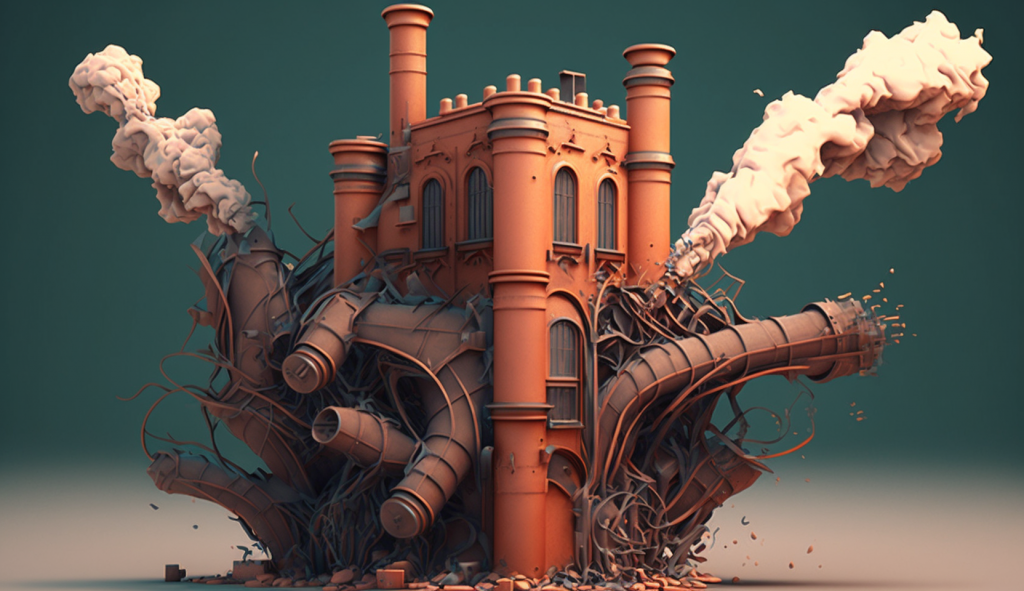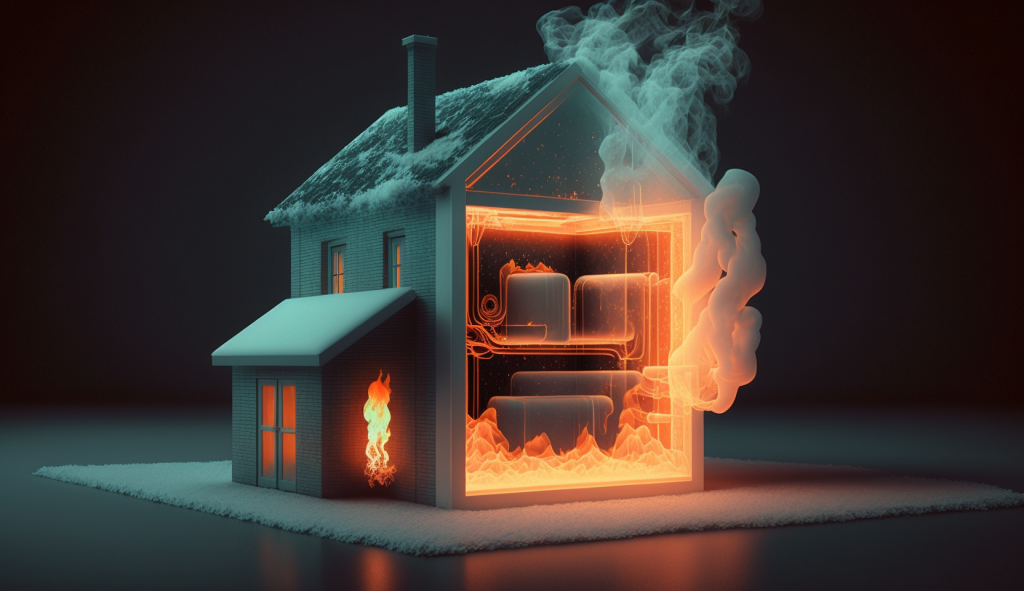Radiators Vs. Forced Air: Who Will Triumph In Efficiency?
There was a recent Twitter debate in which a Chicago man said that it was so great having an apartment where the radiators were always so hot that he had to open the windows in January. I love energy efficiency! he beamed. There is a belief that boilers are fundamentally more efficient than forced air heat, irrespective of whether you’re, you know, grossly overheating your apartment. The truth is that, well, like many other things in this blogosphere, it’s complicated. The other truth, is that there is no universe in which it is more efficient to heat your apartment to 85 degrees in the winter, no matter how efficient your system is. The biggest problem, though, is that there is no widely-used standard for how to compare two systems that work on fundamentally different principles beyond the percentage of gas that is converted into heat. Funny enough, I have a proposal for one!
There was a lively Twitter debate in which a gentleman from Chicago said that it was so great having an apartment where the radiators were always so hot that he had to open the windows in January. I love that it’s so energy efficient! he added. I am still wondering if this was a real exchange or a hallucination induced by Some Of That Michigan Herb I’ve Been Writing About. Simply put, there is a belief that boilers are fundamentally more efficient than forced air heat. The truth is that, well, like many other things in this blogosphere, it’s complicated. The other truth, responding to Mr. Chicago, is that there is no universe in which it is more efficient to heat your apartment to 85 degrees in the winter, no matter how efficient your system is. That sounded obvious to me. But the biggest problem is that there is no widely-used standard for how to compare two systems that work on fundamentally different principles beyond the percentage of gas that is converted into heat. Funny enough, I have a proposal for one!

Understanding System Efficiency
Efficiencies of combustion-type heating appliances– that is, things that burn gas, oil, or something else, as opposed to electric heating units- are usually measured in Annual Fuel Utilization Efficiency, which tells you how much of the energy that goes in ends up being converted into usable heat. This is easy enough to understand. When a furnace is described as “92% efficient,” that’s referring to 0.92 AFUE. In lay terms, it’s easy to tell a difference between a low-efficiency and a high-efficiency unit. The former is vented with galvanized steel pipe, while the latter is vented with PVC. PVC would not hold up to the temperatures of hot flue gas, so the high-efficiency units have far more efficient heat exchangers than the low-efficiency ones. Aside: in the industry, they are called “mid-efficiency,” but given that we’ve had relatively affordable high-efficiency units for 30 plus years, let’s not call them “mid-efficiency.” They are “low efficiency.” On this issue I will put my foot down!
There are many measurements in considering HVAC efficiencies, and they all measure slightly different things. SEER and EER are used for air conditioning. COP and HSPF are used for heat pumps. And AFUE is used for combustion appliances. There isn’t a one-size-fits-all approach, accordingly. But even if there were, there would be other complicating factors. Is the system sized correctly? Is the air mixing properly? How does thermal mass of building materials factor into the conversation? Watts per square foot is a good metric, but it requires a calculation that can’t come built into the nameplate of the furnace, so no one uses it outside of high-performance building design. Watts per square foot is also complicated by the need to provide this metric for both heating and for cooling. Oh, and then there’s sensible load versus latent load. Humidity is a thing that the lay person often forgets about completely, and this is why we have to design buildings and systems slightly differently depending on climate (this is also why states like Louisiana and Florida have truly obscene residential electrical demand, because they’re basically subtropical swamps).
DIY Energy Tips: Insulating Boiler Pipe
The Limits of Steam
Where it gets more complicated is that most steam boilers don’t go much higher than 82% or so, and this is largely because it’s very hard to eke out additional thermodynamic efficiencies from a unit whose heating medium must be around 200°F. It is possible, but it’s not common. At that point, you’re mostly harvesting waste heat to be reused for preheating supply water to squeeze out a couple of percentage points here and there in efficiency. The same is true with the PHIUS passive house nutjobs who will do stuff like– I kid you not- coiling a copper water supply line around a waste stack because it can preheat the cold water supply into the domestic water heating system by as much as ten or fifteen degrees Fahrenheit.
It’s true that every little bit counts, but that pesky logarithmic cost-effectiveness curve flattens out after you get that initial efficiency boost. Initial investments make a big difference in efficiency boosts– for example, going from 80 AFUE to 92 AFUE. Going from 92 to 97% efficiency is a bit pricier. Getting to effectively 100% efficient (which is possible through the magic of the refrigeration cycle) will cost a bit more, though.This is where we must start thinking about envelope retrofits to reduce load instead of increasing thermal efficiency. But that’s far more expensive, of course. At this point, we’re now starting to think about factors well beyond combustion efficiency to try and compare steam systems with forced air.
Thermally speaking, our experience of temperature in space is defined by whatever our skin is touching. Usually, this is just air, but it also includes our feet on floors, which is why heated floors feel so nice, because of how much heat is lost through our feet (and because of how uncomfortable a cold floor is). Radiators radiate heat– a high thermal mass emitting infrared radiation- as opposed to forced air, where the radiation takes place inside the furnace’s air handler, and then the warm air is circulated throughout the house through ductwork. While the radiator keeps radiating while there is hot water or steam circulating through, it gently warms the ambient air, while the furnace is constantly blowing dry air to try and keep your skin a comfortable temperature.
But the problem is that we don’t really have a good way to compare the thermal masses in different systems, because efficiency is such a limited calculation.
Thermal Mass, The Complicating Factor
A veteran architect once told me that a lot of the dialogue about green building was kind of bullshit. “Good architects have been building green for thousands of years,” he declared. It’s not completely untrue, although it’s nice that we have made advancements in building science over the past few decades, even. The trope that “we don’t build buildings like we used to” is at odds with the obsessive notion in our age of declining empire that everyone has to live in single-family houses, which must then be built on cheap suburban land and bedecked in cheap vinyl siding. And blah blah blah, broken record Nat ranting about suburbia. That is why we don’t have nice things architecturally. But I digress.
The point here is that one of the oldest ideas in architectural design is the idea of the durability and thermal mass of heavy materials like stone and brick. Durability is separate from thermal comfort, but, conveniently, we get a twofer with these heavy materials. This is why a St. Louis brick house– with foot-thick walls- stays cool for a large portion of the day, even when it’s 117°F outside. It’s also why radiators are highly efficient ways to heat. But short of measuring actual comparative fuel inputs, we could measure things using a thermal time constant (TTC) to see how long surfaces would stay at a certain temperature.
Summer Breeze: Heat Pumps, Mini-Splits, and the Magic of Thermodynamics
How To Use The Thermal Time Constant
The Thermal Time Constant (TTC) measures the time required for a material or system to reach 63.2% of its final temperature after a step change in temperature. (Why 63.2%? I haven’t the steamiest). While the TTC is hard to measure in comparison to the AFUE numbers that get slapped on every furnace at the factory, it’s a starting point for thinking about high-performance design based on the role of thermal mass. For example, a building with a high thermal mass may require a heating system with a slower response time to avoid overheating, while a building with a low thermal mass may require a system with a faster response time for efficient heating. Oversizing or undersizing a system can lead to poor air mixing and inefficient heating.
Suffice it to say, Chicago man was perhaps on the right track, but derailed like a Norfolk Southern train (too soon?) when he failed to understand some simple math about thermodynamics. Creating a similarly legible system would be no small feat, since buildings are all so different that it’d require comparing completely unlike things and creating a standardized metric that would allow for major architectural differences– say, radiant heated concrete slab with nine-foot ceilings and cinder block walls, versus an I-joisted barn of a building with a huge volume.
This may well factor into some sort of new framework for assessing mechanical and architectural energy efficiency. But until that framework arrives, we’ll have to just make sure we are properly considering our thermal mass. Or, you know, we could just insulate our buildings better! Either one is going to represent an upgrade to the current dominant paradigm of “just slap an 80-percenter furnace in there and call it a day.”





